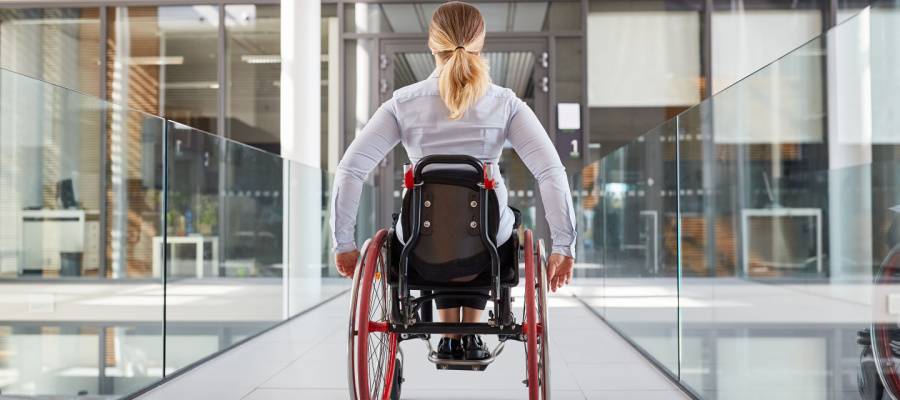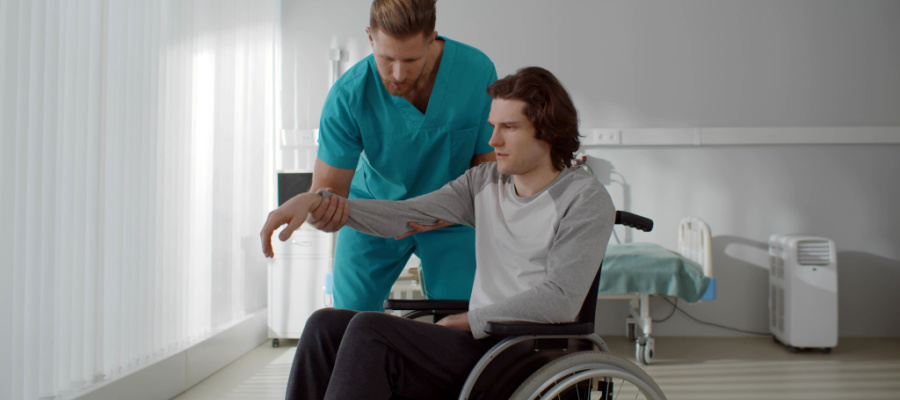Which Part of the Brain is Damaged in Paralysis?
When a person experiences paralysis, it’s typically due to damage to specific parts of the brain or spinal cord that are responsible for controlling movement and sensation. Paralysis can be caused by various factors, including traumatic injuries, neurological conditions, or medical disorders. At Devoted Helpers, based in Sugar Land, Texas, we provide compassionate, professional care for individuals affected by paralysis, offering support for both their physical and emotional needs.
In this article, we’ll explore which parts of the brain are damaged in paralysis, how this damage affects movement and sensation, and the implications for caregiving and rehabilitation.
Understanding the Brain and Paralysis
The brain plays a critical role in controlling the body’s movements, thoughts, and sensations. For individuals with paralysis, certain areas of the brain or spinal cord may be damaged, resulting in a loss of function or the ability to control specific body parts.
Paralysis can be classified based on its origin…
- Upper Motor Neuron Paralysis – Caused by damage to the brain or spinal cord, leading to loss of motor control.
- Lower Motor Neuron Paralysis – Caused by damage to the spinal cord or nerves outside the spinal cord.
The exact location and extent of brain damage determine the type and severity of paralysis, as well as the level of care the patient needs.
Which Part of the Brain is Responsible for Movement?
Several parts of the brain work together to control movement, and damage to any of these regions can result in paralysis. Key areas involved in movement include…
The Motor Cortex
The motor cortex is located in the frontal lobe of the brain and is the primary area responsible for voluntary movements. It sends signals to the muscles in the body to initiate and control movement. Damage to the motor cortex can cause paralysis or weakness in specific parts of the body. The severity depends on the location and extent of the damage.
- Damage to the Motor Cortex – Injury or disease affecting the motor cortex can lead to hemiplegia (paralysis of one side of the body) or quadriplegia (paralysis of both arms and legs). Common causes of motor cortex damage include stroke, traumatic brain injuries, and certain neurological diseases like multiple sclerosis (MS).
The Brainstem
The brainstem, which includes the midbrain, pons, and medulla oblongata, is located at the base of the brain and plays an essential role in controlling basic life functions, including breathing, heart rate, and swallowing. It also acts as a conduit for motor signals between the brain and the spinal cord. Paralysis can occur if the brainstem is damaged, especially in cases of severe trauma or strokes.
- Damage to the Brainstem – Paralysis resulting from brainstem injury typically involves quadriplegia, affecting both the upper and lower body. Damage to the brainstem can result in bulbar paralysis, which affects speech, swallowing, and respiratory function.
The Cerebellum
The cerebellum, located at the back of the brain, is responsible for coordination, balance, and fine motor control. While it doesn’t directly control movement like the motor cortex, it helps refine and smooth out voluntary movements.
- Damage to the Cerebellum – Injury to the cerebellum can cause difficulties with coordination and balance, leading to a condition called ataxia. This can cause a person to have difficulty walking, standing, or performing tasks that require precise movements, though it doesn’t usually result in complete paralysis.
Spinal Cord and Paralysis
The spinal cord is the primary pathway for communication between the brain and the rest of the body. It transmits motor commands from the brain to muscles and sensory information from the body back to the brain. Damage to the spinal cord can result in paralysis, as the signals cannot reach the affected body parts.
Spinal Cord Injury (SCI)
In cases of spinal cord injury, the extent of paralysis depends on the level and severity of the injury. The higher the injury on the spinal cord, the more of the body may be affected.
- Cervical Spine Injury – Damage to the spinal cord in the neck area (cervical spine) often leads to quadriplegia (paralysis of both arms and legs). Individuals with cervical spine injuries may also have difficulty breathing if the respiratory muscles are affected.
- Thoracic Spine Injury – Damage to the upper back (thoracic spine) can result in paraplegia (paralysis of the lower body). This type of injury may affect the torso, legs, and pelvic organs but usually leaves the arms and hands unaffected.
- Lumbar and Sacral Spine Injury – Damage to the lower spine (lumbar or sacral region) can result in varying degrees of lower body paralysis, including difficulty with walking, sitting, or bowel and bladder control.
The Role of the Autonomic Nervous System
The autonomic nervous system (ANS) is responsible for regulating involuntary functions such as heart rate, blood pressure, digestion, and temperature regulation. This system is controlled by areas of the brainstem and spinal cord. Paralysis affecting the autonomic nervous system can lead to complications like difficulty regulating body temperature, blood pressure instability, and issues with digestion or urinary function.
- Autonomic Dysreflexia – This is a condition that can occur in individuals with spinal cord injuries above the T6 level. It causes dangerous spikes in blood pressure in response to stimuli like a full bladder or constipation, which can be life-threatening if not managed properly.
What Causes Paralysis?
Paralysis can result from a variety of conditions that affect the brain and spinal cord. Common causes include…
- Stroke – A blockage or rupture of blood vessels in the brain can lead to a stroke, causing brain cell death and paralysis.
- Traumatic Brain Injury (TBI) – A severe head injury from accidents or falls can damage brain regions responsible for movement.
- Spinal Cord Injury (SCI) – Trauma to the spine can sever or compress the spinal cord, leading to varying levels of paralysis.
- Multiple Sclerosis (MS) – A disease that causes the immune system to attack the protective covering of nerve fibers, resulting in paralysis and other symptoms.
- Neurological Diseases – Conditions like Amyotrophic Lateral Sclerosis (ALS) and Parkinson’s disease can cause progressive paralysis due to nerve damage.
Treatment and Rehabilitation for Paralysis
Although damage to the brain or spinal cord often cannot be completely reversed, treatment and rehabilitation can help improve function and quality of life. A multidisciplinary approach involving medical professionals, physical therapists, occupational therapists, and caregivers is essential for recovery.
- Physical Therapy – Helps improve strength, coordination, and movement, especially for patients with incomplete paralysis.
- Occupational Therapy – Focuses on improving the ability to perform daily tasks and regain independence, using adaptive tools and techniques.
- Medication – Pain management and medications to treat spasticity, inflammation, or infections are often used in the treatment plan.
- Assistive Devices – Wheelchairs, braces, or other mobility aids can help individuals maintain independence.


